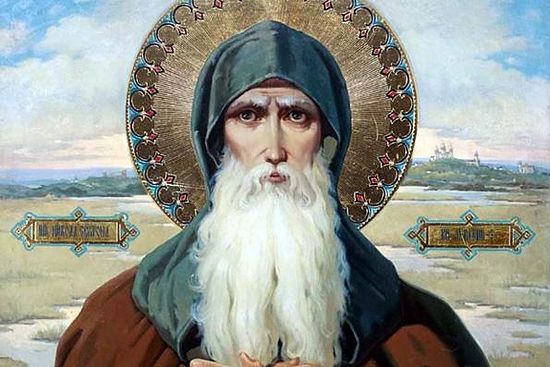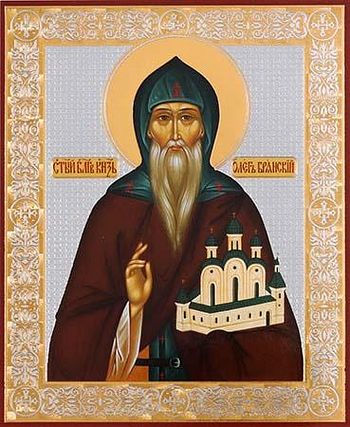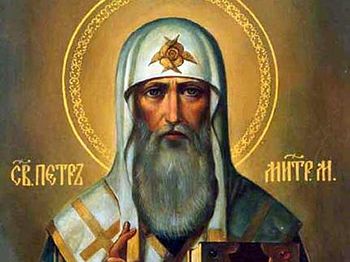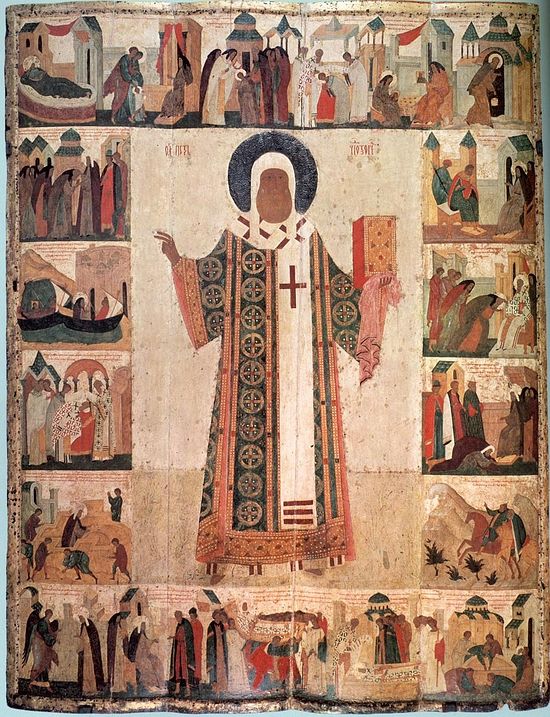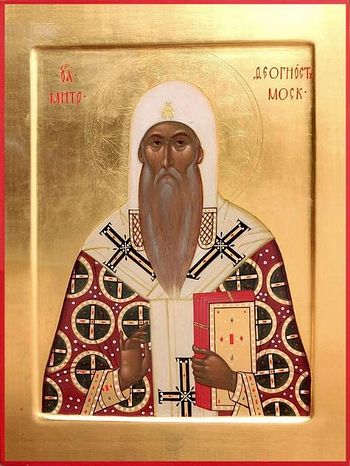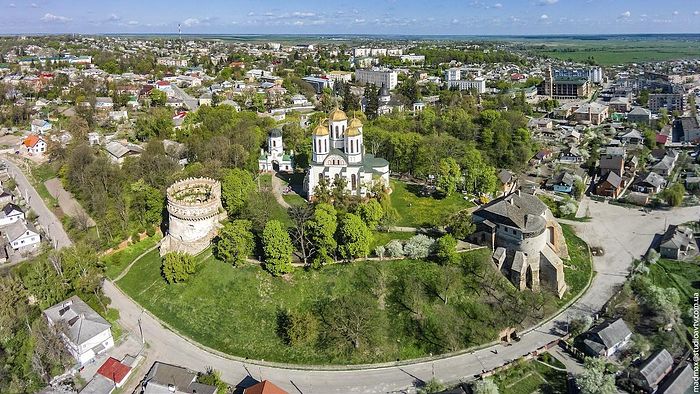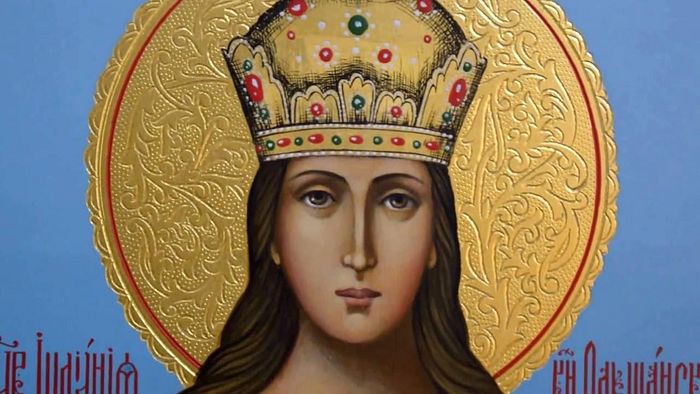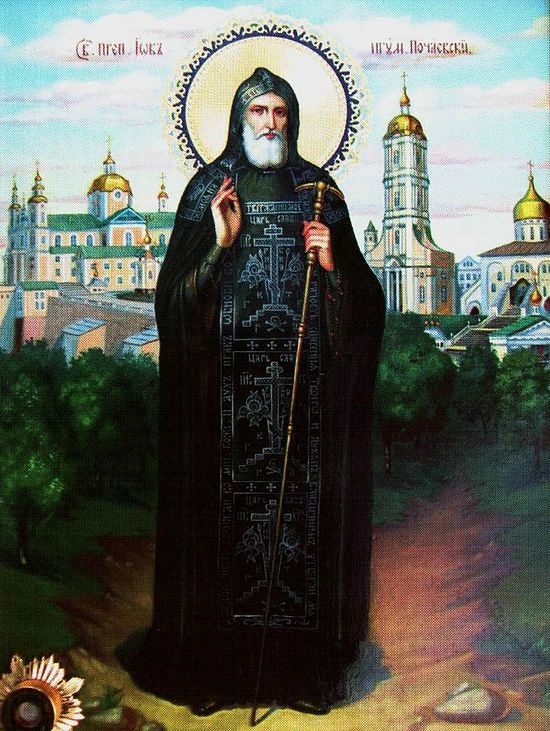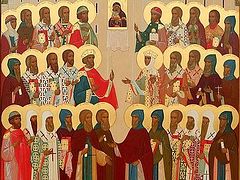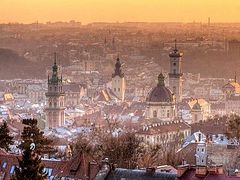St. Nicholas Svyatosha the Wonderworker
St. Niphont of Novgorod and the Caves
St. Andrei Bogolubsky
St. Oleg of Bryansk
St. Peter, Metropolitan of Kiev, Moscow, and All Rus’
St. Methodius of Pochaev
St. Theognostos of Kiev, Moscow, and All Rus’
St. Cyprian of Moscow and All Rus’
St. Photius of Kiev and All Rus’
St. Theodore of Ostrog and the Far Caves
St. Juliania, Princess of Olshansk
St. Peter, Metropolitan of Kiev, Galicia, and of All Rus’
St. Athanasius of Brest
St. Job of Pochaev
The Venerable Nicholas Svyatosha the Wonderworker
Commemorated on October 14/27
The Venerable Nicholas (Nikola) Svyatosha the Wonderworker of Caves1 was the titular Prince of Chernigov and actual Prince of Lutsk, an important city and castle in eastern Volhynia, who led an amazing life of humility.
In Russian, the first name of the saint is written in an irregular diminutive, Nikola, which in English would sound something like “Nicky”, and the epithet Svyatosha meaning “Little Saint”, which as described by Nun Cornelia (Rees), is a term often thrown at those “who tried to live a righteous life to the shame of those around them.”2
This certainly describes the life of our venerable Father Nicholas, as he was the first among the Russian princes to accept monasticism, and while the other princes attempted to entangle him into their self-destructive internecine wars motivated by envy and pride which often brought ruin to Rus’, St. Nicholas followed the example of the saints and struggled to abstain from these temptations, culminating in the podvig of his monasticism, complete with ascetic fasting for which he was mocked.
While lives of Rus’ princes and the stories of the lands of Galicia-Volhynia are filled with examples of senseless fratricidal wars and conflicts, some of which continue to this day, Saint Nicholas is a wonderful and sobering reminder that the only way to bring salvation to these lands is not through political and nationalistic triumphalism, but by acquiring a peaceful, Christ-like spirit.
The Venerable Holy Hierarch Niphont of Novgorod and the Caves, Abbot of Volhynia
Commemorated April 8/21
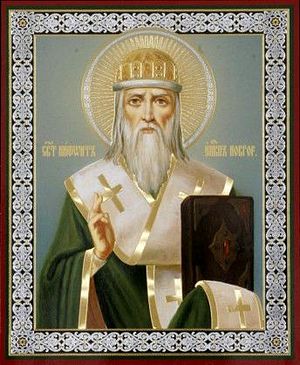 Like many of the saints of Volhynia, St. Niphont (Niphon) began his spiritual life laboring in the Kiev Caves Lavra. After increasing in wisdom and virtue in Christ, St. Niphont decided to follow in the footsteps of the Venerable Barlaam of the Caves, and walk his path of pilgrimage towards Constantinople and the other Holy Lands.
Like many of the saints of Volhynia, St. Niphont (Niphon) began his spiritual life laboring in the Kiev Caves Lavra. After increasing in wisdom and virtue in Christ, St. Niphont decided to follow in the footsteps of the Venerable Barlaam of the Caves, and walk his path of pilgrimage towards Constantinople and the other Holy Lands.
This meant he followed the ancient way which eventually led him to Holy Mountain Dormition Monastery in Zymne, where the brothers, being impressed by the experienced and educated holy man, elected him as Abbot of the Holy Mountain at Zymne.3
St. Niphont was noted to have continued the chronicle of St. Nestor after Sylvester (from 1116-1157) and described some of the important events in Volhynia.4 Saint Niphont continued the tradition of the Holy Mountain Monastery of Volhynia to record the history of Rus’, which the fathers there had done since before the days of even St. Nestor the Chronicler himself.
St. Niphont was eventually elected Archbishop of Novgorod and fell asleep in the Lord on April 21 in Kiev.
The Right-Believing Andrei Bogolyubsky
Commemorated July 4/17
Andrei Bogolyubsky was the prince of Vladimir-Suzdal who was murdered in 1174. He was most famous for bringing the Vladimir Icon from Kiev to Vladimir-Suzdal, which is not located in Volhynia, unlike the older Vladimir-Volynsky. He was involved in many military campaigns including in Volhynia.
Venerable Oleg of Bryansk
Commemorated September 20/October 3
Saint Oleg was the Prince of Bryansk, a forested land in modern day Russia located at the eastern extreme of the region of Polesia, of which Volhynia is considered a part. St. Oleg fought against the Lithuanian invaders of Volhynia and gathered land there for monastic use. In 1274, he became a monk in Byransk.
Holy Hierarch Peter, Metropolitan of Kiev, Moscow, and all Rus’
Commemorated August 24/September 6, December 21/January 3
The Holy Hierarch Peter of Kiev and wonderworker of all Rus' is most likely the greatest saint on this list who was confirmed to be a Volhynian by birth and blood.
This native of Volhynia held the highest cathedra in all the Rus' lands, and is considered the first bishop of Moscow (though he always kept the title "of Kiev") and predecessor of all Russia's Patriarchs.
St. Peter was noted to have entered a monastery when he was only 12 years old. He had a particular gift for iconography; many of his icons worked wonders, and he gifted one to Metropolitan Maxim during his visit to Volhynia.
St. Peter would go on to found Ratsky (or Radsky) monastery, somewhere in the northeastern corner of Galicia or otherwise considered the southwest of Volhynia.
The monastery was said to be located on the right bank of the Rata river, most likely not too far from the Zhovkva district of the Lviv region, which would technically place it in Galicia or Red Ruthenia.
It's important to understand that during the life of St. Peter, Galicia and Volhynia were two parts of one whole.
Yuri of Galicia was directly called the “King of Galicia, Lodomeria, and all Russia” and his capital Lutsk was one of the most important cities of Volhynia.5
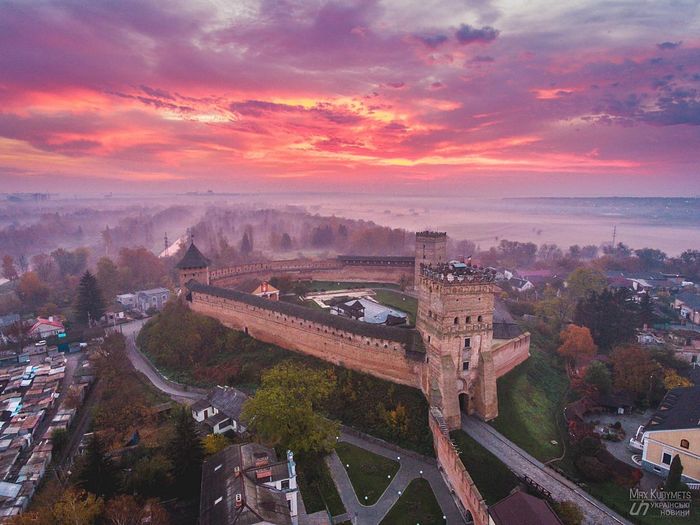 Lutsk Castle. Photo: Max Kudymets
Lutsk Castle. Photo: Max Kudymets
St. Peter became an abbot so famous for his holy life and spiritual gifts that King Yuri Lvovich of Galicia himself visited him for advice.
When the time came to elect a new Metropolitan of Kiev, the Mother of God revealed in a vision that it was to be Abbot Peter of Rata Monastery.
St. Peter is of course famous for moving his administration to Vladimir-Suzdal and Moscow, wherein he founded the High Monastery of Saint Peter, which stands on the Boulevard ring not far from Sretensky Monastery or the Moscow Kremlin.
St. Peter, blessed with God's grace, likely foresaw the ruinous centuries that would befall Orthodoxy in Kiev and especially in Galicia and Volhynia, and had to make the difficult choice to move the cathedra to northern Rus'. Of course, he did not do this for political reasons, but rather because it was the safest place at the time.
St. Peter predicted the liberation from the Tatar yoke that was to come, and the future rise of Moscow as the center of all of Russia. He worked countless miracles and guided the princes of Rus' towards their destiny for the good of the people.
On December 21, 1326, Metropolitan Peter departed to the Lord.
It is noteworthy that St. Peter of Kiev, as a Volhynian by origin, due to a special combination of circumstances, was also buried by the Volhynian Bishop Theodosius of Lutsk.
On the very day of the burial, when they carried the body of the Saint in his coffin, someone saw that the Saint blessed his companions from his coffin with both hands as a Hierarch blesses. His relics are kept in the Dormition Cathedral inside the Moscow Kremlin.
A little-known fact is that the Patriarch of Moscow owns a special set of vestments made to be an exact copy of those which St. Peter wears in his famous icon in the Dormition Cathedral.
And so, God willed that the first canonized Saint of Moscow was in fact the Abbot of Volhynia, a citizen of Galicia and Lodomeria. This reveals the oneness of all the Russian lands.
Venerable Methodius of Pochaev
Very little clear verifiable information is known about the Venerable Methodius of Pochaev, despite the fact that he is the oldest recorded monk of Pochaev, and founder of the Holy Spirit Skete. It is said he witnessed the apparition of the Mother of God on Skete Hill and lived to the remarkably long age of one hundred and thirty-seven years.6
Holy Hierarch Theognostos of Kiev, Moscow, and All Rus’
Commemorated March 14/27
Saint Theognostos (1353+) came to the throne at one of the most difficult times in the history of the Russian Church, when the territories of Rus’ were divided. He struggled to keep the church united in Galicia and Volhynia, and it was under his rule that St. Peter of Kiev, his predecessor and a native of Volhynia, was canonized.
Holy Hierarch Cyprian of Moscow and All Rus’
Commemorated May 27/June 9
Saint Cyprian the Wonderworker was a Metropolitan of Kiev and Moscow of Serbian/Bulgarian descent, born in the early 14th century. When he became Metropolitan of Kiev, he visited Volhynia and helped restore the Church there, which had fallen into disrepair and neglect during the Lithuanian Period; and at one point, there was not even a ruling bishop for the Volhynian diocese. St. Cyprian worked to correct this.
An interesting connection, though anecdotal and unrelated, is the fact that the popular ecclesiastical music style, which in the Russian Church is called Bulgarian Chant, likely originated from Galicia-Volhynia. In ancient times, Galicia and Transcarpathia in particular were the crossroads between Eastern, Western, and Southern Slavs.
Saint Cyprian reposed in 1406 and is remembered as one of the great wonderworkers of the Kievan-Moscow throne.
Holy Hierarch Photius of Kiev and All Rus’
Commemorated July 2/15, May 27/June 9, and September 16/29
St. Photius was an ethnic Greek Metropolitan of Kiev, Moscow, and All Rus’. He came to the throne during the time when the churches in Western (Lithuanian) Rus’ were waning under the Polish-Lithuanian authorities, and he visited many territories which long felt neglected by Kiev, including two separate visits to Volhynia, trying to strengthen the church there under Catholic occupation. He was able to render great assistance “to the increasingly impoverished Patriarch of Constantinople, and to strengthen the international position of the Russian Orthodox Church and the Russian realm.”7
Feeling it would be difficult to head the Russian church from Catholic occupied lands, he eventually moved to Moscow following in the footsteps of Volhynian native and previous Metropolitan of Kiev, Peter the Wonderworker of All Rus’.
The Venerable Theodore of Ostrog and the Far Caves
Commemorated August 11/24
Saint Theodore (Theodosius in monastic tonsure) was born in the late 1300s. He is a descendant of Saint Vladimir of Kiev, and the son of Daniel of Ostrog, the ancestor of all the Ostrog princes.
This Prince of Ostrog (in Volhynia) was a true medieval adventurer, a legendary warrior prince who built many churches, and defended Orthodoxy in Volhynia against Papism, and also fought in the Hussite Wars on the side of the Hussites against the Catholic Sigismund of Luxembourg. He likely participated in the Hussite Wars for fear of the Orthodox people of Bohemia; after all, Bohemia and Moravia were once the heart of Slavonic liturgy, and the site of the first mission of Sts. Cyril and Methodius.
Sázava (Sasau) Monastery in Bohemia practiced the Slavonic liturgy from the time of St. Procopius of Sázava, but soon after the Great Schism it was Latinized, and severely ruined during the Hussite Wars. St. Theodore wisely understood that if the Catholic empires were undefeated in nearby Slavic lands, Volhynia could be next, and he did everything he could to help his Hussite allies until he was forced to return to Volhynia due to domestic conflicts.
St. Theodore is perhaps the perfect and rare example in Russia of a Western-style Knights-Errant, and was involved in so many great campaigns of the late middle ages.
The Holy Prince also participated in the defeat of the Teutonic Knights in the Battle of Grunwald.
By the 1440s, St. Theodore ruled Vladimir-Volynsky, Dubno, Ostrog, and a great deal of land in Volhynia and Podolia, though he eventually laid down the sword and entered Kiev Caves Lavra for a life of peace and prayer.
His exact date of death is unknown, but he is believed to have lived extraordinarily long. Soloviev in his History of Russia gives the year of his death as 1483, and if this is so, this means the Saint lived to nearly one hundred years.8
By 1638, it was reported that St. Theodore (Theodosius) lies in the Theodosian Caves where his relics are uncorrupt, and may be visited to this day.
Righteous Virgin Juliania, Princess of Olshansk
Commemorated July 6/19
Princess Juliannia of Olshansk, born sometime between 1540 and 1550, was a God-pleasing virgin and daughter of Prince Yuri of Dubrovytsia and Olshansk who was a benefactor of Kiev Caves Lavra. Her family came from the Rivne region of Volhynia. She died at the young age of 16 and was buried somewhere near the southern wall of Dormition Cathedral of Kiev Caves Lavra;9 her relics were found to be uncorrupt during the time of Archimandrite Elisha Pletenets (1599-1624).
The Churches of Kiev at this time were in a critical state of disrepair, and many were collapsing. The church where her relics were kept even suffered a fire, and so her relics were moved to a new place but not with the proper honor due to a saint.
When the Archimandrite of the Caves St. Peter (Mohyla) came to the Kievan Throne, he immediately began restoration work on all of the Kiev churches, and was noted by contemporaries to have literally saved Kievan Orthodoxy from the ruins.
St. Peter Mohyla took on the monumental task of clearing the dust and ruins of many centuries, and it seems that during the restoration, Saint Juliania’s relics were disturbed and neglected.
She appeared to St. Peter in a dream and caused him to feel shame for the carelessness shown to her relics, and he immediately corrected the error. He ordered a new reliquary to be made and he placed the following inscription upon it:
“By the will of the Creator of heaven and earth, Juliania, patroness and great intercessor to Heaven, rests here for all time. Here are the bones—healing against all passions. You adorn Paradise, Juliania, like a beautiful flower.”10
St. Peter dedicated the 6th of July as her feast day, and many who came to her relics received healing.11
Holy Hierarch Peter (Mogila), Metropolitan of Kiev, Galicia, and of all Rus’
Commemorated December 31/January 13
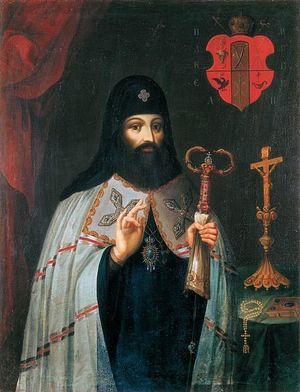 The Holy Hierarch Peter (Mohyla)12 (1596-1647) is undoubtedly one of the greatest metropolitans in the history of the Kievan Cathedra, who rendered not only the Russian Church, but all of Orthodoxy, a great service by creating the first Orthodox Seminary in world history, and raising the education in Malorossia so high that even Uniate bishops were forced to admit his schools were superior to theirs.13
The Holy Hierarch Peter (Mohyla)12 (1596-1647) is undoubtedly one of the greatest metropolitans in the history of the Kievan Cathedra, who rendered not only the Russian Church, but all of Orthodoxy, a great service by creating the first Orthodox Seminary in world history, and raising the education in Malorossia so high that even Uniate bishops were forced to admit his schools were superior to theirs.13
Saint John of Shanghai himself greatly valued the works of St. Peter Mohyla.1415
To understand just how significant a role this holy hierarch played in the development of the Russian Church, one need only turn to one of her greatest historians, Metropolitan Makary [Bulgakov], who said in his History of the Russian Church:
“The name of Peter Mohyla is one of the greatest adornments of our church history. He undoubtedly surpassed all the hierarchs of his times not only in Little Russia, but in the Great Russian Church, and even in the entire Eastern Church—he surpassed them in his enlightenment and education, and even more so in his love of enlightenment and education, and his podvigs (feats) for the good of the enlightenment and education of the Church […] The entire Russian Church was rendered a great service by his founding of his collegium, which served as the model for all theological schools in Russia, and the entire eastern church was rendered a great service by his composition of the Orthodox Confession, which was approved by the other Primates and remains a symbolic work.”16
Metropolitan Makary also notes that Pope Urban VIII called St. Peter in a letter his “honorable brother”—such respect was never given from Rome to any other Metropolitan of Kiev—and invited him to send his well-educated monks to Rome.17
St. Peter refused, of course, as he was one of the strongest fighters against the Unia of his day and his primary method of struggling against the Unia was by educating Orthodox people to surpass even the Jesuit professors, and also making high-level education available to all.
The Famous Syrian historian and Melkite Archdeacon Paul of Aleppo, while passing through Little Russia on his way to Moscow, was amazed to behold how lovingly the Ukrainian people cherished literacy, which was taught even to orphans by Peter (Mohyla). These were his words:
“Even villagers in Ukraine can read and write … and village priests consider it their duty to instruct orphans and not let them run in the streets as vagabonds”
Due to his tremendous work in creating some of the first Slavonic language works on a printing press, Peter Mohyla, is one of the four evangelists of Eastern Slavic Printing, along with Saint Job of Pochaev, Ivan Fyodorov of Moscow, and Konstanty Wasyl Ostrogski. While the latter three can be credited with printing the Holy Scriptures, Petro Mohyla printed the catechisms and instructions the Russian Church would need to restore itself to the former glory of Kievan Rus’ after the chaos and destruction caused by the Mongolian and Polish invasions.
A Holy Hierarch the likes of which unseen since ages long past, a 17th-century dogmatician without contemporary rivals, and the very Father of Little Russian Literature—Saint Petro Mohyla, Metropolitan of Kiev, left a legacy so far-reaching, we may call him the Father of the Little Russian Nation; however he was not born in Malorossia, let alone Volhynia.
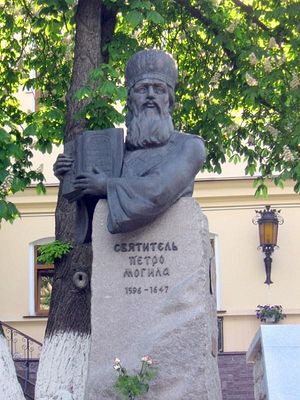 Saint Petro was born in 1596, in Suceava, Moldovia, to a noble family of the Romanian-Moldavian blood—the Movilești. In Romanian, his name is Petru Movilă. He grew up in a Polish Castle in the Lviv region of Galicia, and he was noted to have received his education at the Lviv Dormition Brotherhood; he spoke many languages including Old Western Russian, Polish, Latin, Greek, and Romanian.
Saint Petro was born in 1596, in Suceava, Moldovia, to a noble family of the Romanian-Moldavian blood—the Movilești. In Romanian, his name is Petru Movilă. He grew up in a Polish Castle in the Lviv region of Galicia, and he was noted to have received his education at the Lviv Dormition Brotherhood; he spoke many languages including Old Western Russian, Polish, Latin, Greek, and Romanian.
While he did not specifically live in Volhynia, he spread the tradition of brotherhoods—Orthodox education, culture, and charity societies throughout all Ukraine, and he may very well be the reason why Ukraine is not currently a Catholic country. So, for this reason he is honored also in Volhynia, as there was nowhere in the Russian Church where his influence wasn’t felt.
Much like Saint Anthony of the Caves, the founder of Kiev Caves Lavra, St. Peter Mohyla’s relics lie somewhere unknown beneath the Lavra, and his statue stands outside Kiev Theological Seminary and Academy directing students to the gospel of Christ.
Venerable Hieromartyr Athanasius of Brest
Commemorated September 5/18
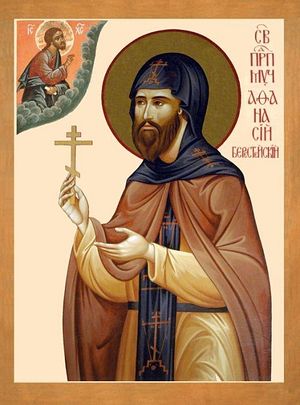 The Venerable Hieromartyr Athanasius was a Belarusian abbot martyred by the Catholics. He was born around 1597 to a pious Belarusian family in the Polish-Lithuanian Commonwealth, was educated in an Orthodox school and subsequently a Jesuit university.18 It is clear from his surviving journals written from a young age alone, that he received a very high and valuable education. He was versed in theological and academic texts, and he spoke Greek, Latin, Polish, and Belarusian.1920 He also worked as a teacher for nobility in the Commonwealth.
The Venerable Hieromartyr Athanasius was a Belarusian abbot martyred by the Catholics. He was born around 1597 to a pious Belarusian family in the Polish-Lithuanian Commonwealth, was educated in an Orthodox school and subsequently a Jesuit university.18 It is clear from his surviving journals written from a young age alone, that he received a very high and valuable education. He was versed in theological and academic texts, and he spoke Greek, Latin, Polish, and Belarusian.1920 He also worked as a teacher for nobility in the Commonwealth.
In 1627, he joined Holy Spirit Monastery in Vilnius and began his monastic life, one filled with love and service to the poor, and educating people about the Orthodox Faith, which he defended to the death.
In 1640, he became the abbot of the Monastery of St. Simeon in Brest, where he constantly preached against the Union of Brest—a union with the Pope of Rome which many Orthodox in the commonwealth accepted for political reasons.
He was imprisoned for his apologetics, accused of insanity, and the Polish authorities declared that he was to be defrocked—and they demanded that Metropolitan St. Peter (Mohyla) of Kiev confirm this. The Holy Hierarch Peter refused, and reinstated St. Athanasius as abbot of the St. Simeon Monastery.21
The Saint was again thrown into prison for his preaching by the Polish King, who was persuaded by St. Peter Mohyla to release St. Athanasius to him in Kiev, where he was expected to stay and never return to Brest. Upon the death of the Holy Metropolitan, St. Athanasius returned to Brest.
When the Zaporizhian Cossacks arose under Hetman Bohdan Khmelnitsky and began their war of liberation against the Uniates and Poles, St. Athanasius was arrested yet again. The Jesuits tried to force him to renounce his faith, but he cried aloud, “Anathema to the Union!” And so on September 5, 1648, he was taken into the forest outside Brest, brutally tortured with hot coals, flayed and burned, and was made to watch as his grave was dug.
He was then shot in the head, but when this failed to kill him, he was thrown into the open grave, and managed to cross his arms before being buried alive. Almost a year later, the monks went searching for his relics and found them to be completely uncorrupt.
The life of this holy martyr, who lived on the northern border with Volhynia, is a testimony to the fact that there should never be a Unia; entering into a union with those whom the saint anathematized before his martyrdom is a betrayal of his witness, and of the countless martyrs of Volhynia who suffered for the Orthodox faith.
Venerable Job of Pochaev
Commemorated May 6/19, August 28/September 10, October 28/November 10
Our Venerable Father Job, Abbot of Pochaev (1551-1651+) is one of the brightest stars of Volhynia, though he first arose from Galicia. This shepherd of all Volhynia and Galicia walked the earth for over one hundred years.
While he is not the first saint of Volhynia, nor the most venerated, if compared to the All-Slavic Saints Cyril and Methodius, or All-Russian Vladimir and Olga, who are venerated more broadly in the church and certainly not directly associated with Volhynia, St. Job is the most renowned saint most intimately tied to Volhynia. Considering that the Synaxis of Volhynian Saints was established to celebrate the return of Pochaev Lavra to Orthodoxy, he may be considered the most central saint to this synaxis and the quintessentially Volhynian Father.
Many books and articles can and should be devoted to the works of Saint Job in Volhynia alone, though because information on this saint is easier to find than others in this list, we will link here to several articles, and simply summarize his wonderful works.
Born Ivan Zhelizo near Kolomyia in the Ruthenian Voivodeship of the Polish-Lithuanian Commonwealth (modern day Ivano-Frankivsk, Ukraine), from an extremely young age he already modeled his life after Sts. Sava, John of Damascus, and John Climacus, and around the age of ten, he entered a monastery and was tonsured a monk at age 12.
Saint Job is most famous because of four primary reasons:
-
He lived for over 100 years and for nearly half his life headed the Pochaev Lavra.
-
He was one of the strongest Western Ukrainian fighters against the Unia and any form of Union with Rome.
-
He worked with Prince Constantine Ostrogski to publish the first Slavonic bible on a printing press to save the Slavic liturgical language from Latinization.
-
He was famous for the miracle at Pochaev, and appeared after his repose with the Mother of God and an army of angels, saving the monastery from destruction by a Turkish army.
Much like his immediate predecessor in this list, St. Athanasius of Brest, Venerable Job was perhaps, along with his contemporary St. Peter Mohyla, and the earlier St. Mark of Ephesus, one of the strongest opponents against union with Rome.
This is particularly valuable to note, because the Unia was always strongest in Western Ukraine, where Saint Job is also highly venerated—even quite paradoxically, among Uniates themselves. Many Uniates who venerate him are even unaware that he was completely against the Unia, as many Uniates historically even believed they were Orthodox, and did not realize the Unia was essentially a Catholic yoke imposed on Western Rus’ to make the people easier to conquer and assimilate by Catholic Empires.
Therefore, in these days of politicization of religion, where propaganda and misinformation can be found everywhere, especially concerning the Ukrainian Crisis, any Christian should simply look directly to the lives of saints of these lands, especially in Western Ukraine. When you understand that monumental figures like Job of Pochaev completely opposed the Unia and the schisms that came with it, the way forward becomes evident. Modern Ukrainian schismatics who pray with Uniates have no right to lay claim to the holy sites of Ukraine, when the saints who practically built these places opposed their false doctrines.
Saint Job is one of the Four Evangelists of Eastern Slavic Printing, along with Saint Peter Mohyla, Ivan Fyodorov of Moscow, and Prince Konstanty Wasyl Ostrogski.
Together with Ivan Fyodorov and Prince Konstanty Ostrogski (a descendant of Theodore of Ostrog in this Synaxis), Saint Job printed the Ostrog Bible, which was the first bible ever printed in Slavonic, to prevent the Jesuits from destroying the Slavic liturgy in Galicia and Volhynia and replacing it with Latin, as they did before at Sázava (Sasau) Monastery in Bohemia, not far from the birthplace of the Church Slavonic language itself. In doing so, Saint Job saved the work of Sts. Cyril and Methodius from the latest round of western persecution which would continue to this day.
After his repose, Saint Job never forsook his monastery. There is the particularly famous tale of the miraculous saving of Pochaev attributed to the Icon of the Mother of God therein.
When Pochaev was surrounded by an army of Turks, the abbot ordered that an Akathist to the Mother of God be served. With the opening words "To Thee the Champion Leader," the sun was eclipsed, and the Virgin Mary appeared over Lavra Hill, her face incandescent and radiating blinding light.
Her robes gleamed like shooting stars, and beside her were Angels with drawn swords. St. Job stood beside her, bowing, and beseeching Her to defend his monastery.
Terrified at the sight of the holy hosts, the Turks opened fire. Their shots and arrows, however, fell backwards and wounded the shooters themselves. As they fled, they trampled one another.
The Cossacks pursued them, taking multiple prisoners. Many of them converted to Christianity, and some joined the Brotherhood of the Lavra.
The story of this miracle is sung to this day in a beautiful Ukrainian language ballad about Pochaev. The English lyrics can be found here—Saint Job is the “Father Zalalo”[sic] mentioned in the song.
When the main Turkish army fled Lvov under Polish pursuit, they found their Pochaev army had been scattered, which gave them no choice but to flee to Zbarazh for a final stand.
This was recorded as part of the War of Zbarazh. Ironically, Bogdan Khmelnitsky had laid siege to that same city not 26 years before, after reportedly taking a blessing from Saint Job of Pochaev.
This entire Synaxis is dedicated to the return of Pochaev Lavra, which had been occupied by Uniates, to Orthodoxy, which happened no doubt through the prayers of Saint Job. If anyone—Moslem, Uniate, or schismatic—thinks to seize Pochaev, as the latter two have often threatened, they should know they are making war against Heaven itself, where Saint Job stands constantly interceding for Pochaev, Volhynia, Ukraine, Russia, and all Orthodox Christians, especially those who call upon their father from Volhynia to help them on the way to salvation.
To be continued.

